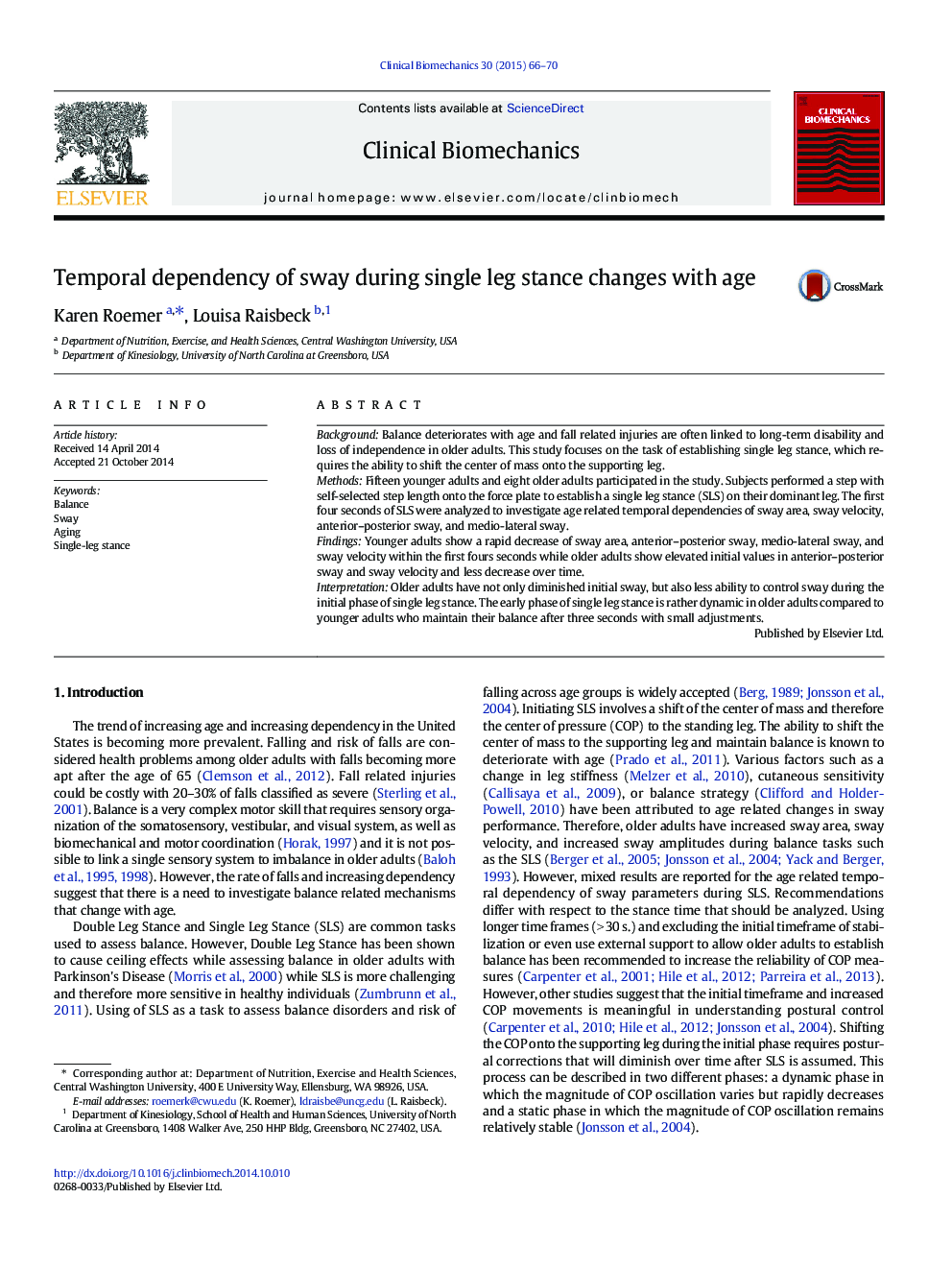| Article ID | Journal | Published Year | Pages | File Type |
|---|---|---|---|---|
| 4050263 | Clinical Biomechanics | 2015 | 5 Pages |
•We investigate balance initiation for single leg stance in young and old adults.•We examined the age related temporal dependency of sway parameters.•Younger adults show a rapid decrease of sway measures over time.•Older adults show elevated initial values and less decrease over time.•Balance initiation is rather dynamic in older adults compared to younger adults.
BackgroundBalance deteriorates with age and fall related injuries are often linked to long-term disability and loss of independence in older adults. This study focuses on the task of establishing single leg stance, which requires the ability to shift the center of mass onto the supporting leg.MethodsFifteen younger adults and eight older adults participated in the study. Subjects performed a step with self-selected step length onto the force plate to establish a single leg stance (SLS) on their dominant leg. The first four seconds of SLS were analyzed to investigate age related temporal dependencies of sway area, sway velocity, anterior–posterior sway, and medio-lateral sway.FindingsYounger adults show a rapid decrease of sway area, anterior–posterior sway, medio-lateral sway, and sway velocity within the first fours seconds while older adults show elevated initial values in anterior–posterior sway and sway velocity and less decrease over time.InterpretationOlder adults have not only diminished initial sway, but also less ability to control sway during the initial phase of single leg stance. The early phase of single leg stance is rather dynamic in older adults compared to younger adults who maintain their balance after three seconds with small adjustments.
